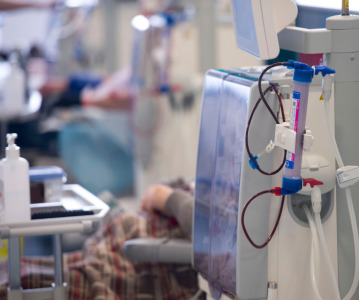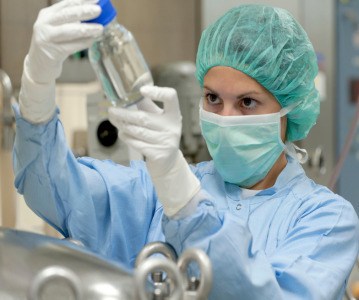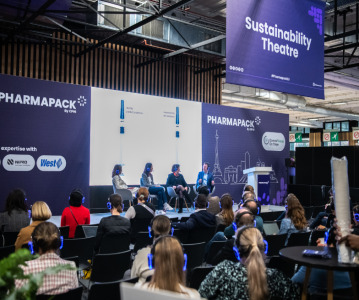Sustainability vs single-use-tech: how COVID-19 has made biopharma more sustainable
COVID-19 saw biopharma turn to single-use technology in a big way. But greater use of disposable manufacturing systems does not necessarily mean drug and vaccine production has become less environmentally sustainable.
Various studies [i]and reports [ii]have noted the key role single-use technologies played in industry response to the pandemic. In March[iii], for example, the International Federation of Pharmaceutical Manufacturers & Associations (IFMPA), wrote that disposable systems were vital to efforts to add vaccine production capacity over the past two years.
Javier Lozano, Head of Process Engineering UK & Single-Use Specialist at engineering and facilities organisation PM Group also says single-use technologies have been critical to the fight against SARS-CoV-2 and its variants.
“The COVID-19 pandemic brought about a sudden need for the development and fabrication of new molecules and vaccines as quickly as possible. Single-use technologies’ key characteristics - flexibility and rapid deployment - mean that it has been the platform of choice for development of these new therapies.
“As a consequence, there has been a massive increase in demand, which has led to a significant strain in single-use manufacturing and dramatic increases in lead times,” Lozano says.
This dynamic was also highlighted by the IFPMA authors, who suggested the industry experienced “challenges in the supply of critical raw materials, testing reagents for batch release, single-use systems, and equipment required for vaccine manufacturing.”
However, as the pandemic recedes and technologies suppliers increase output, most supply chain difficulties are likely to be resolved, according to Lozano.
“We foresee that during 2022, the gap between manufacturing capacity and demand will be reduced with lead times slowly going back to pre-pandemic levels.
“However, it is important to highlight that single-use technologies within the biopharma industry are here to stay. Traditional, reusable facilities will remain an exception with the focus placed on the intensification of single-use technologies (SUT) use.”
Sustainable single-use
During the early stages of the pandemic the focus was on speed, with vaccine developers under pressure to develop countermeasures. Governments worldwide were scrambling to develop strategies to slow the spread of COVID-19, and supply chain managers rushed to reconfigure sourcing and distribution networks.
As the pandemic has evolved, the focus has shifted and observers have started to look at the longer-term impact. One major focus in recent months has been concerns about the environmental impact of the sudden surge in vaccine production, with the increased use of single-use systems being raised as a potential issue.
But those worried about the sustainability of single-use technologies need to look beyond the terminology according to Lozano.
“Despite what it may seem by its own name, SUT are significantly more sustainable than traditional stainless steel (SS) facilities. Single-use facilities dramatically reduce the energy input required for manufacturing a new biopharma drug,” he says.
Single-use technologies are much less intensive in terms of water use, clean steam and heating according to Lozano, who also points out that a single-use biopharmaceutical manufacturing facility can use 35-40% less energy than a traditional stainless-steel facility.
Reduced floor space is another factor. Lozano says “The sheer scale of single use facilities is dramatically smaller than traditional SS facilities. This greatly reduced footprint results in a significant reduction in construction materials (steel, concrete, etc.) and the resulting reduction in construction and material related emissions and environmental impacts.
“This has a knock on effect in the size of the area being serviced and reduction in the scale of HVAC air handling units needed, etc.”
The problem of single-use plastics
However, while single-use technologies may not be the source of environmental concerns which the name suggests, they could still be made more sustainable.
Recyclability is one potential area for improvement according to Lozano, who says reducing current single-use systems to their component parts for potential reuse is still a significant challenge for the biopharmaceutical industry.
“In terms of recycling single-use components, it has proved to be very challenging. The main reason being that components are manufactured with multiple types of plastics. These are difficult to separate, which limits the possibilities for recycling altogether.
“The limited economic viability of the recycling process, has resulted in recycling efforts so far, being very localised.
“Another alternative to incineration and recycling is pyrolysis. This is where high temperatures with low levels of oxygen are used for the generation of fuel and landfill. Controlled landfill disposal should also be of consideration as an alternative to incineration,” he says.
“The key aspect that needs to be addressed is the end of life treatment of the plastics used. However, it is important to highlight that even with the current practice - where incineration is still the main method of treatment - CO2 emissions and energy consumption levels are lower for single-use technologies than for stainless steel systems.”
Broader sustainability initiatives needed for biopharma
But ultimately rather than focusing on single-use technologies, biopharmaceutical industry sustainability efforts should concentrate on overall process efficiency Lozano says.
“There is still quite a lot that can be done within the biopharma industry to reduce our energy consumption. Use of the manufacturing space more efficiently, reducing the volumes of rooms with high environmental requirements, onsite generation of green energy, reduction on gas dependence for heating etc.
“All of these are initiatives that need to be developed and implemented across the industry to achieve the challenging net zero targets we have as an industry and society,” he says.
Sustainability advantages through standardisation
So, by increasing use of single-use technology, COVID-19 may ultimately end up making biopharmaceutical production more sustainable from an environmental standpoint.
The reconfiguration of supply chains prompted by the pandemic may end up having a similar impact according to Lozano, who says “A key development that we will see in the short term will be the result of a big push for standardisation from the end users. They have suffered significantly during the last two years’ due to supply chain issues.”
He explained that standardisation has the advantage of providing end-users multiple vendors to choose from, without impacting their process design.
“It also results in shorter lead times, due to the drawing approval stage being removed from the lead time, and the potential to have frequently used assemblies off the shelf.
“This also offers sustainability advantages at both the vendor and end-user site, due to the reduced requirement for warehousing space. Initiatives such as SDD are expected to see wide adoption, with much easier interchangeable designs and multiple, fully equivalent options available to the pharma companies to choose,” he says.
References:
[i] https://www.researchgate.net/publication/353343222_Single-use_systems_bioreactors_in_the_biopharmaceutical_industry_and_its_use_in_SARS-CoV-2_vaccine%27s_candidates%27_production_A_review
Related News
-
News US FDA adds haemodialysis bloodlines to devices shortage list
On March 14, 2025, the US FDA published an open letter to healthcare providers citing continuing supply disruptions of haemodialysis bloodlines, an essential component of dialysis machines. -
News Women in Pharma: Manufacturing personal and team success
Our monthly Women in Pharma series highlights the influential lives and works of impactful women working across the pharmaceutical industry, and how the industry can work towards making the healthcare industry and workplace more equitable and inclusive... -
News Pfizer may shift production back to US under Trump pharma tariffs
At the 45th TD Cowen annual healthcare conference in Boston, USA, Pfizer CEO Albert Bourla outlined the potential for Pfizer to shift its overseas drug manufacturing back to the US as pharmaceutical industry players weigh their options against Presiden... -
News Experimental drug for managing aortic valve stenosis shows promise
The new small molecule drug ataciguat is garnering attention for its potential to manage aortic valve stenosis, which may prevent the need for surgery and significantly improve patient experience. -
News Women in Pharma: Connecting accessible pharma packaging to patients – a Pharmapack Special
Throughout our Women in Pharma series, we aim to highlight how CPHI events encourage discussions around diversity, equity, and inclusion initiatives in the pharmaceutical industry. -
News Vertex Pharmaceuticals stock jumps as FDA approves non-opioid painkiller
UK-based Vertex Pharmaceuticals saw their stock shares soar as the US FDA signed off on the non-opioid painkiller Journavx, also known as suzetrigine, for patients with moderate to severe acute pain, caused by surgery, accidents, or injuries. -
News Trump administration halts global supply of HIV, malaria, tuberculosis drugs
In various memos circulated to the United States Agency for International Development (USAID), the Trump administration has demanded contractors and partners to immediately stop work in supplying lifesaving drugs for HIV, malaria, and tuberculosis to c... -
News 2024 Drug Approvals: a lexicon of notable drugs and clinical trials
50 drugs received FDA approval in 2024. The centre for biologics evaluation and research also identified six new Orphan drug approvals as under Biologics License Applications (BLAs). The following list picks out key approvals from the list, and highlig...
Recently Visited
Position your company at the heart of the global Pharma industry with a CPHI Online membership
-
Your products and solutions visible to thousands of visitors within the largest Pharma marketplace
-
Generate high-quality, engaged leads for your business, all year round
-
Promote your business as the industry’s thought-leader by hosting your reports, brochures and videos within your profile
-
Your company’s profile boosted at all participating CPHI events
-
An easy-to-use platform with a detailed dashboard showing your leads and performance







